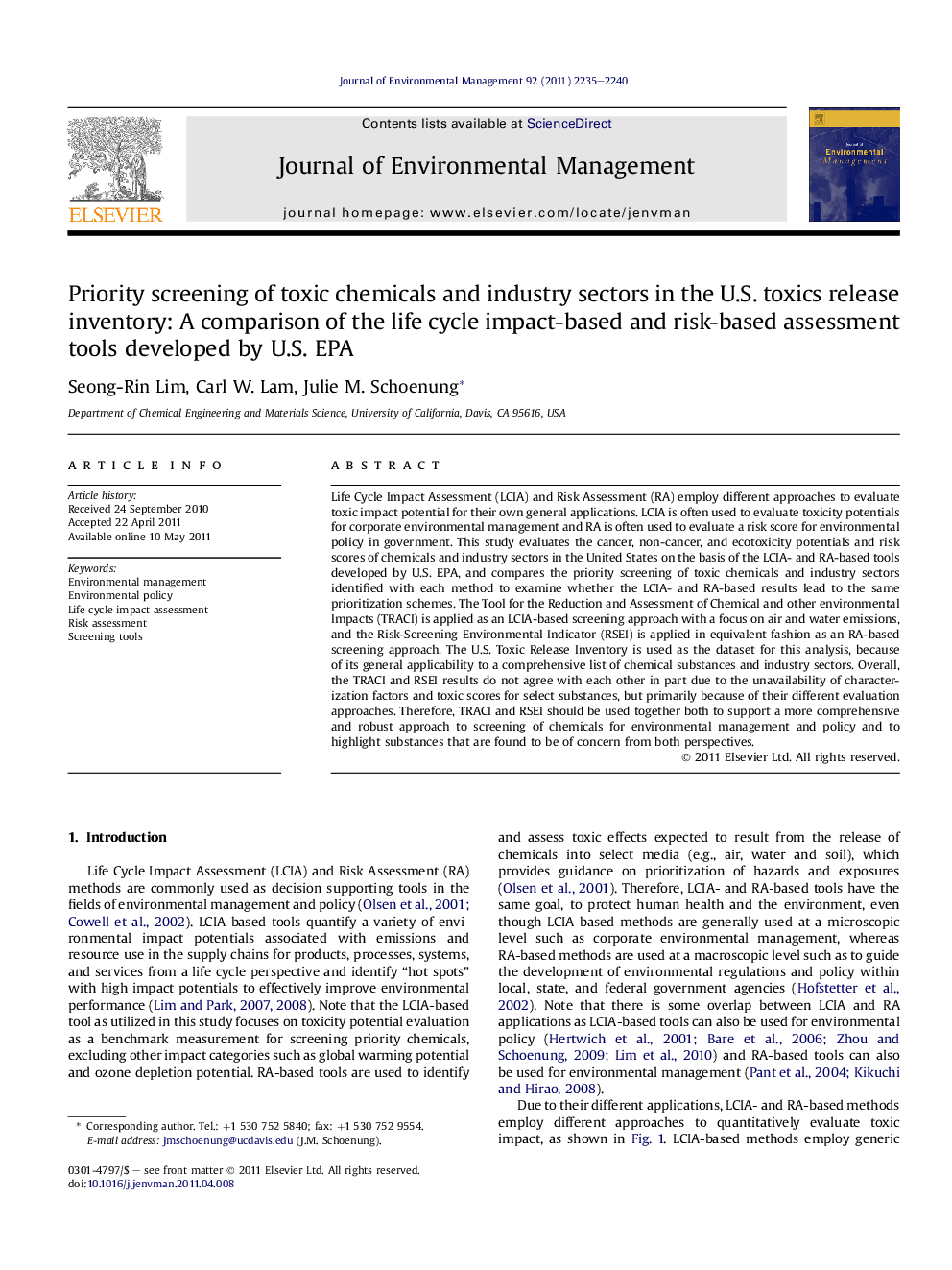| Article ID | Journal | Published Year | Pages | File Type |
|---|---|---|---|---|
| 1057008 | Journal of Environmental Management | 2011 | 6 Pages |
Life Cycle Impact Assessment (LCIA) and Risk Assessment (RA) employ different approaches to evaluate toxic impact potential for their own general applications. LCIA is often used to evaluate toxicity potentials for corporate environmental management and RA is often used to evaluate a risk score for environmental policy in government. This study evaluates the cancer, non-cancer, and ecotoxicity potentials and risk scores of chemicals and industry sectors in the United States on the basis of the LCIA- and RA-based tools developed by U.S. EPA, and compares the priority screening of toxic chemicals and industry sectors identified with each method to examine whether the LCIA- and RA-based results lead to the same prioritization schemes. The Tool for the Reduction and Assessment of Chemical and other environmental Impacts (TRACI) is applied as an LCIA-based screening approach with a focus on air and water emissions, and the Risk-Screening Environmental Indicator (RSEI) is applied in equivalent fashion as an RA-based screening approach. The U.S. Toxic Release Inventory is used as the dataset for this analysis, because of its general applicability to a comprehensive list of chemical substances and industry sectors. Overall, the TRACI and RSEI results do not agree with each other in part due to the unavailability of characterization factors and toxic scores for select substances, but primarily because of their different evaluation approaches. Therefore, TRACI and RSEI should be used together both to support a more comprehensive and robust approach to screening of chemicals for environmental management and policy and to highlight substances that are found to be of concern from both perspectives.
